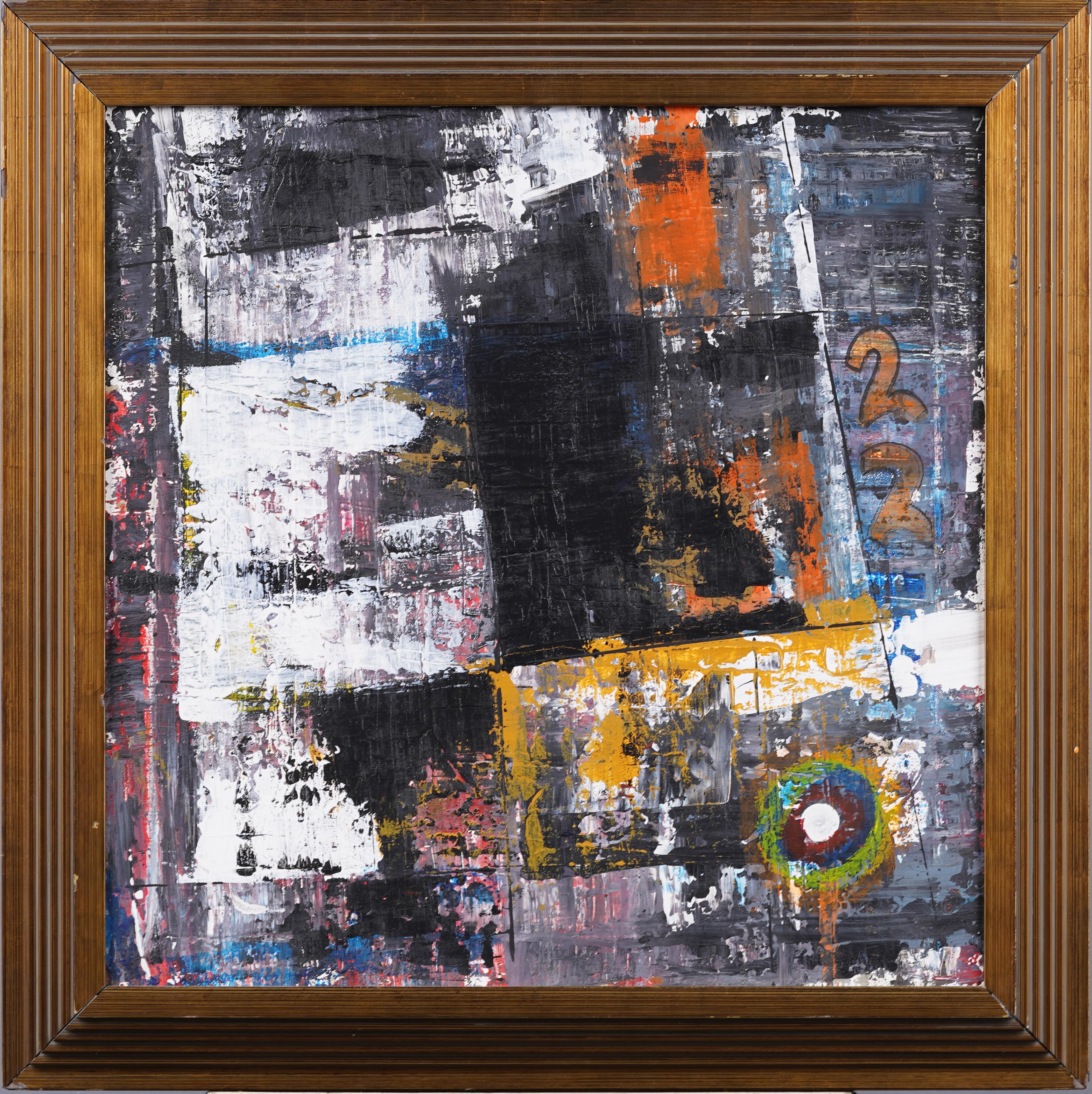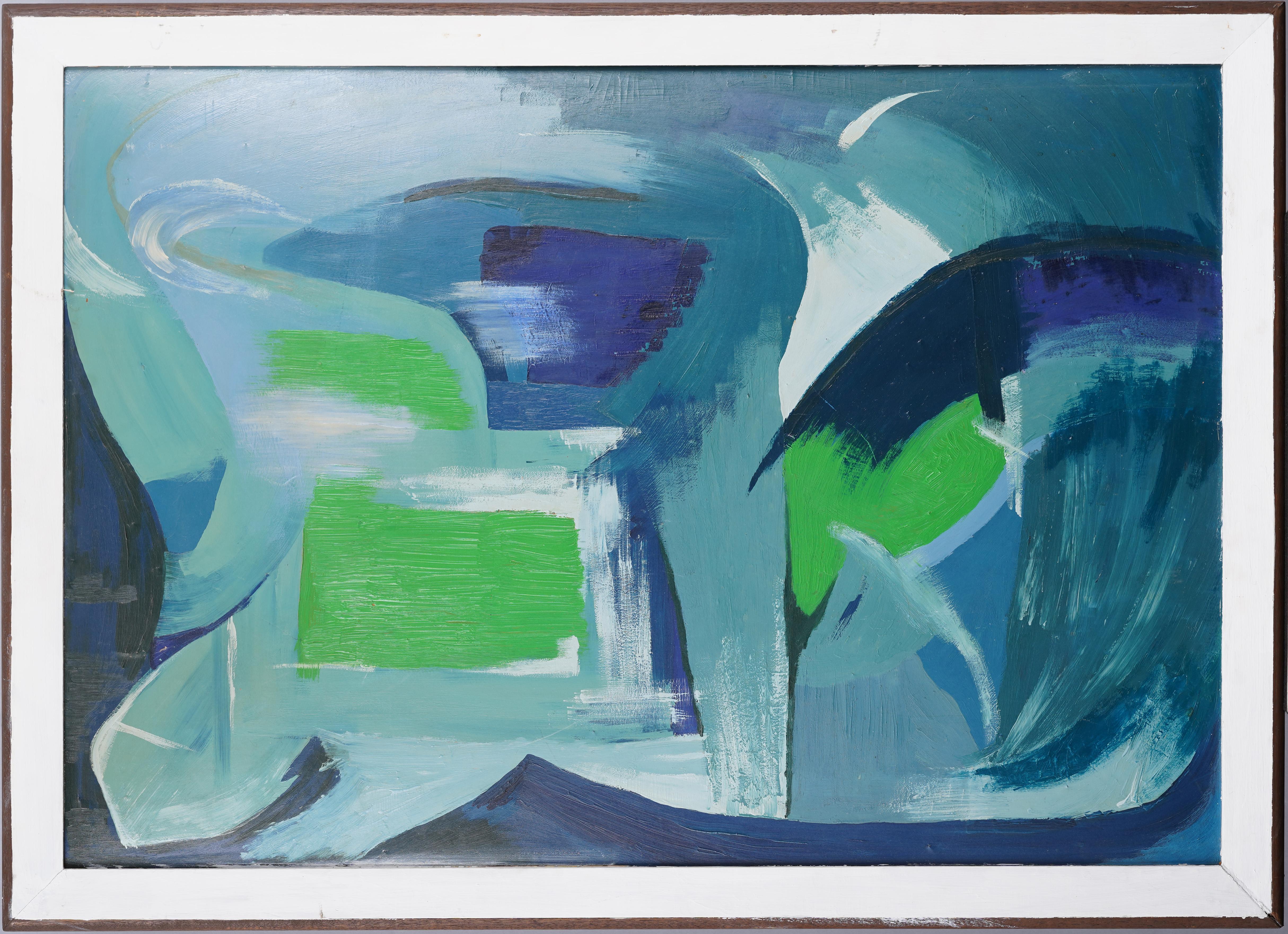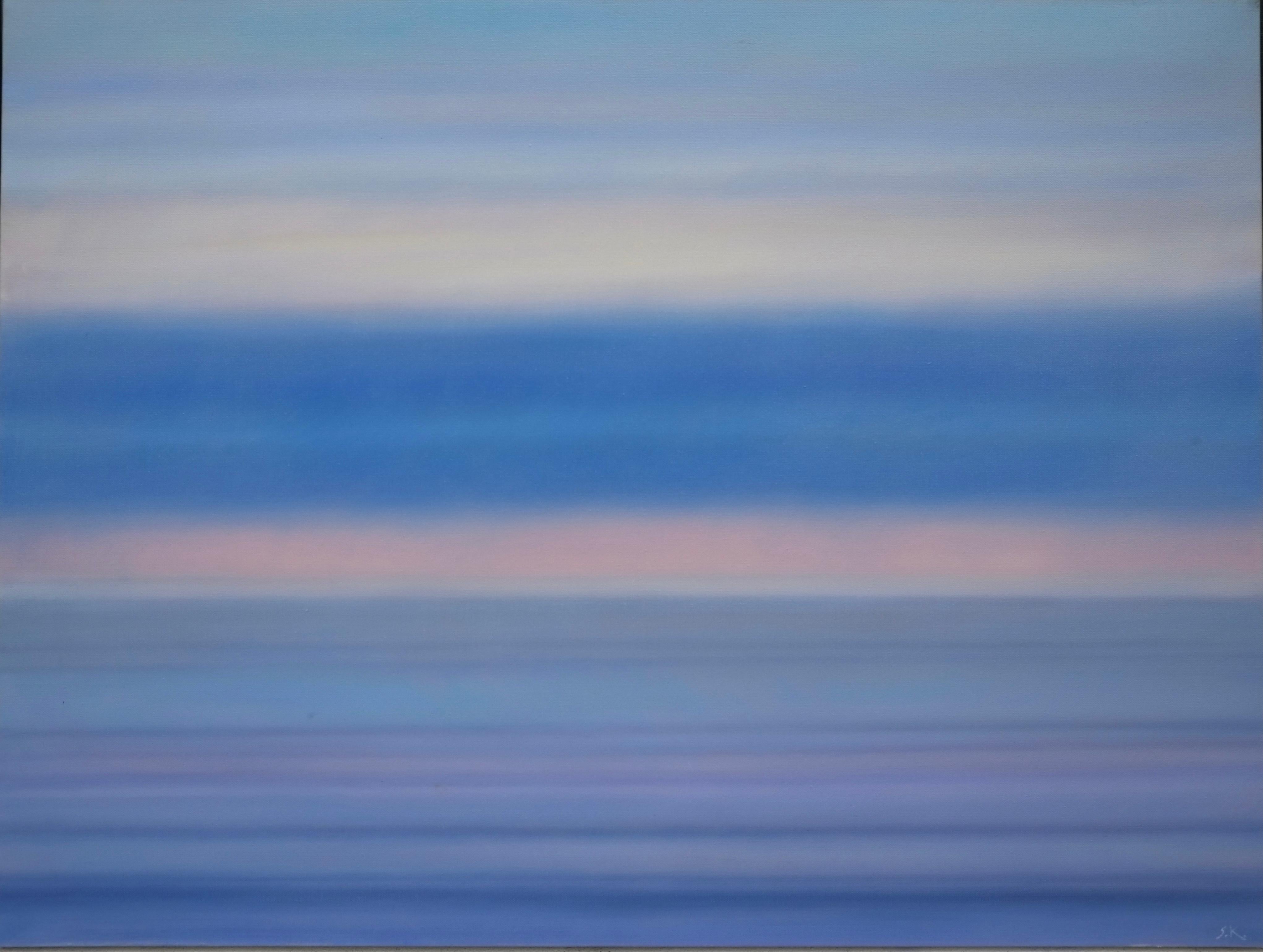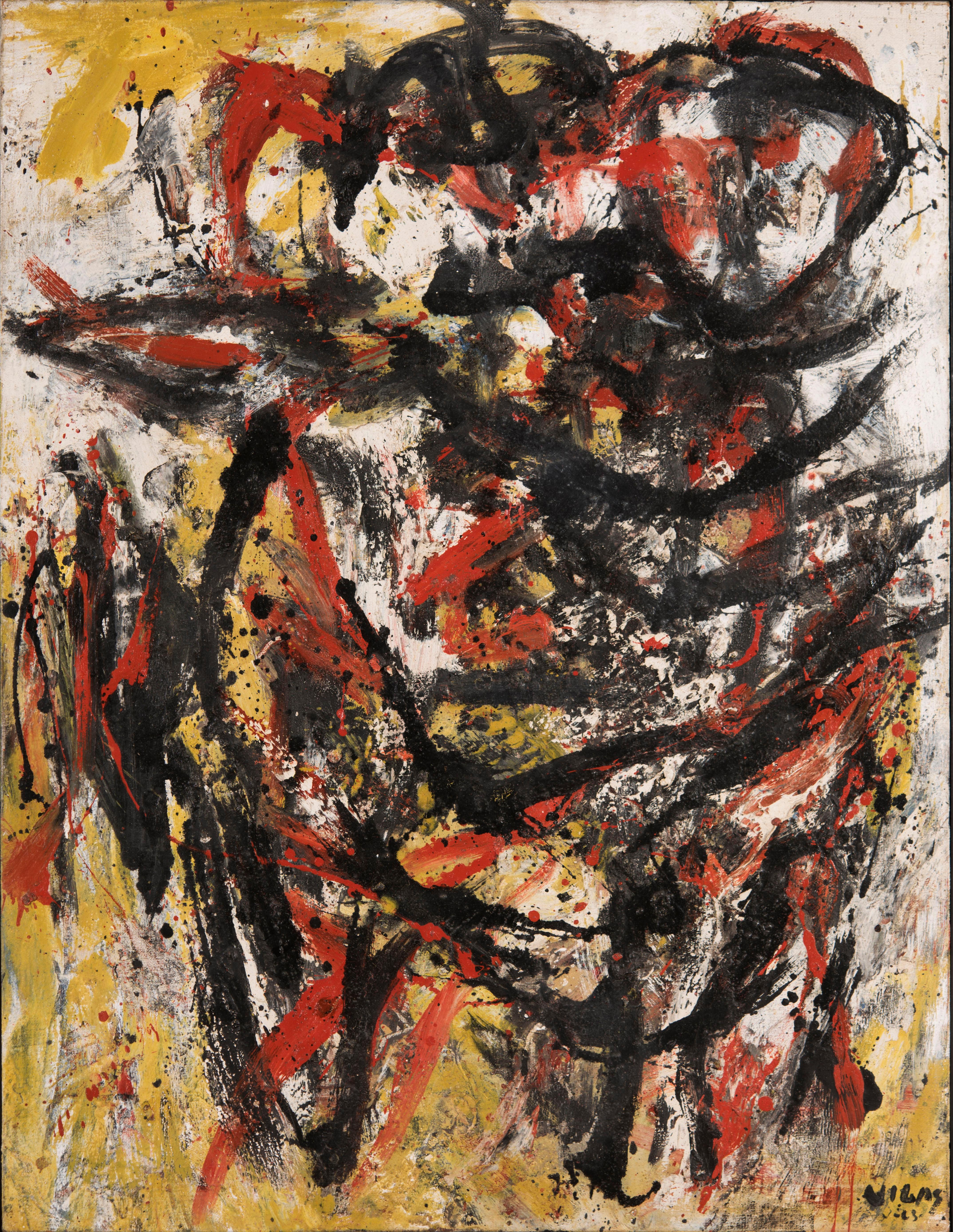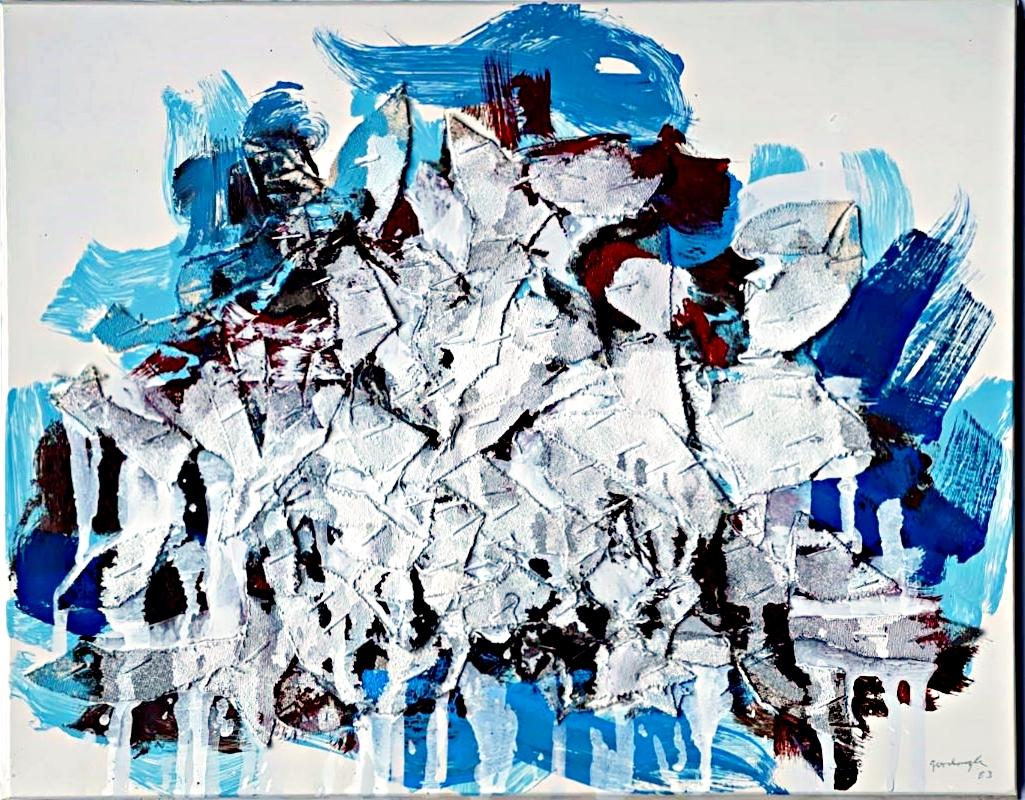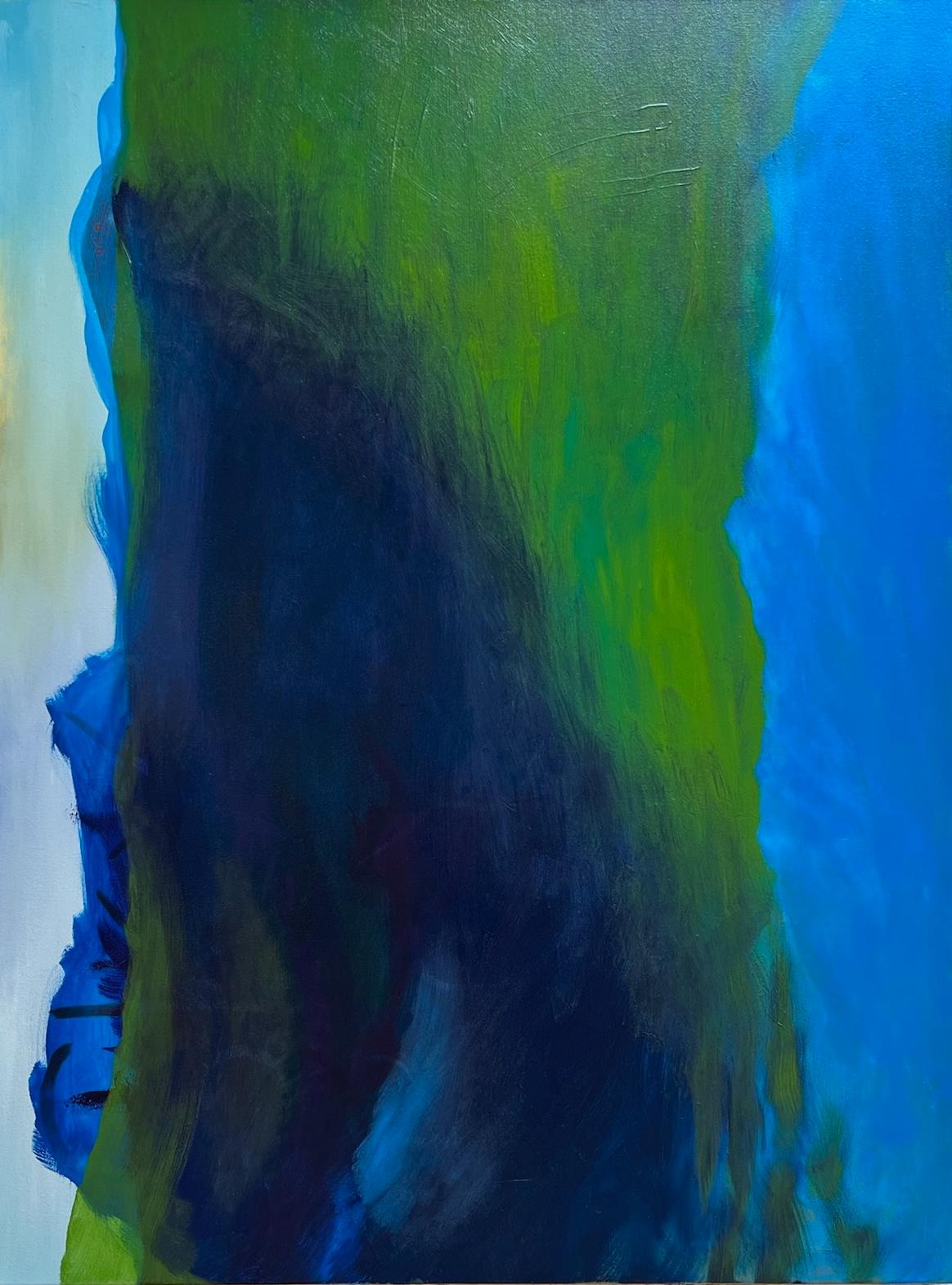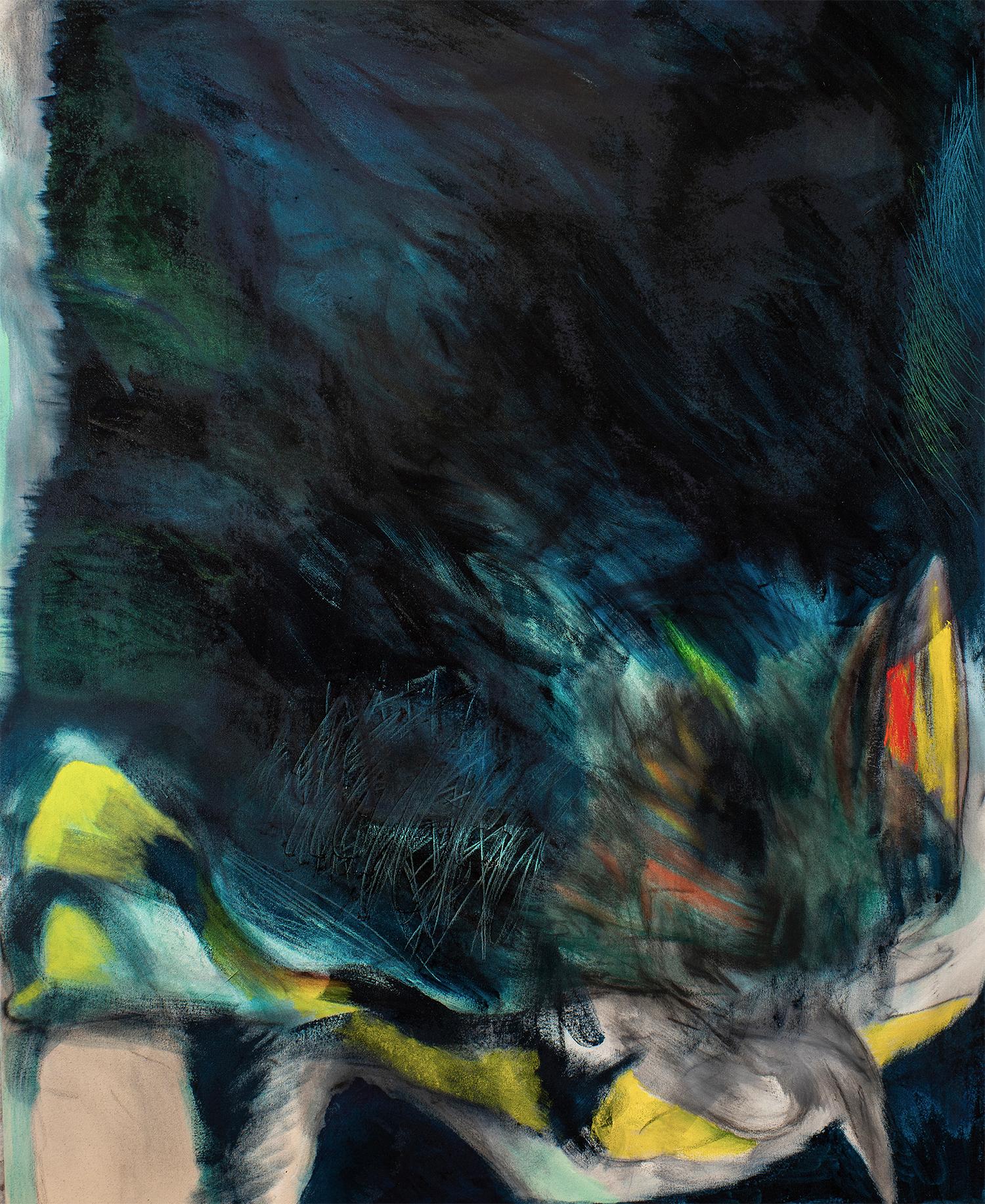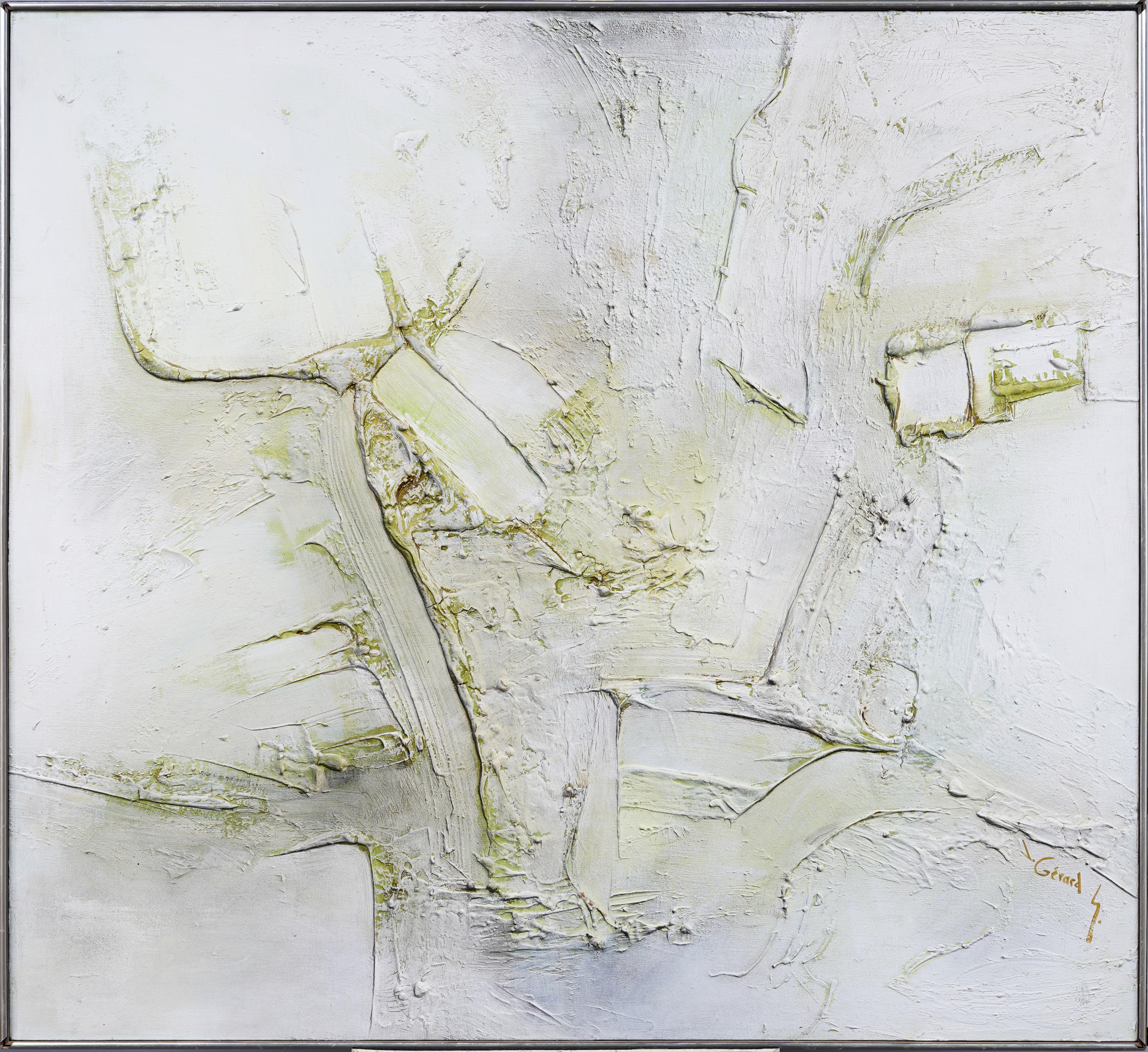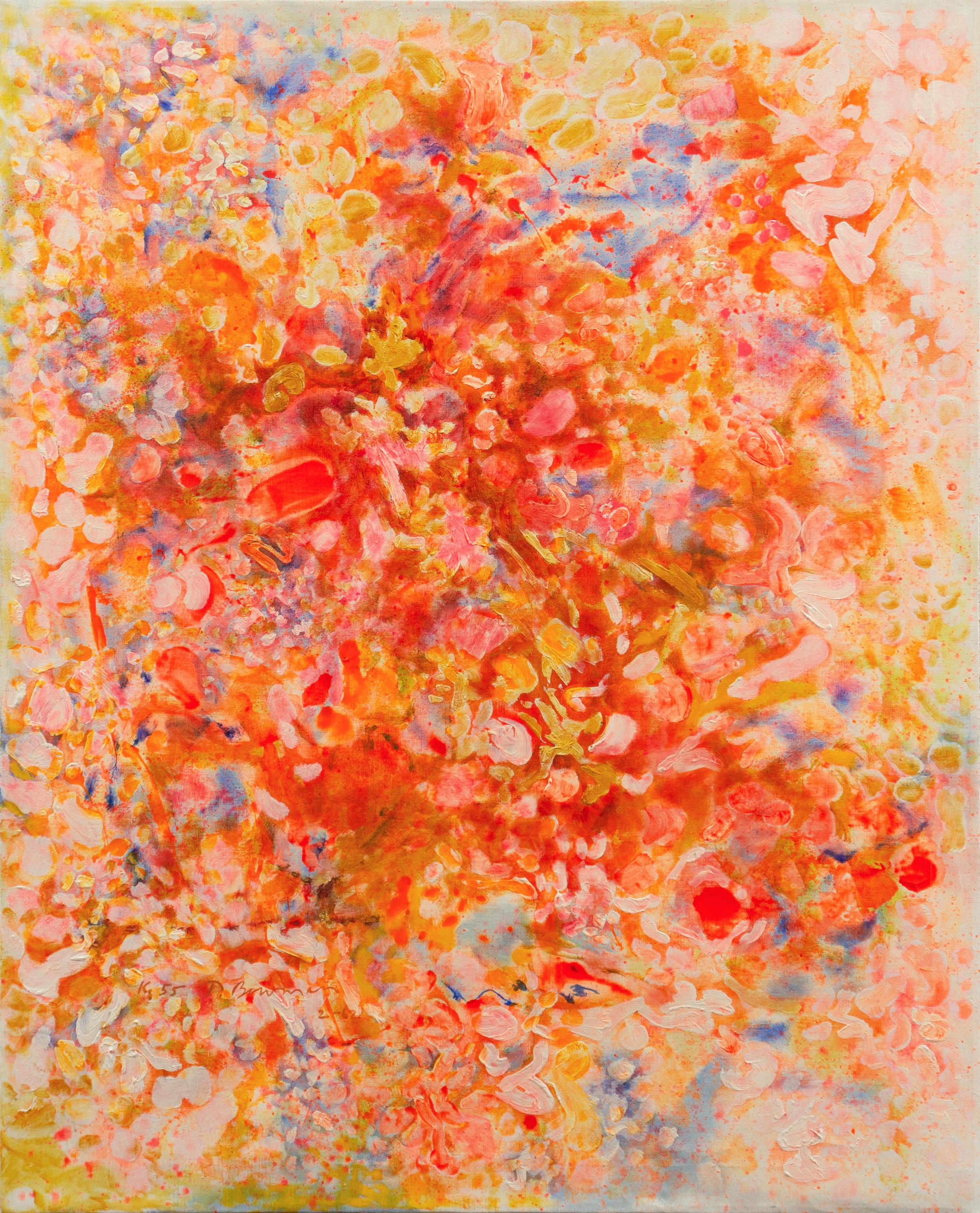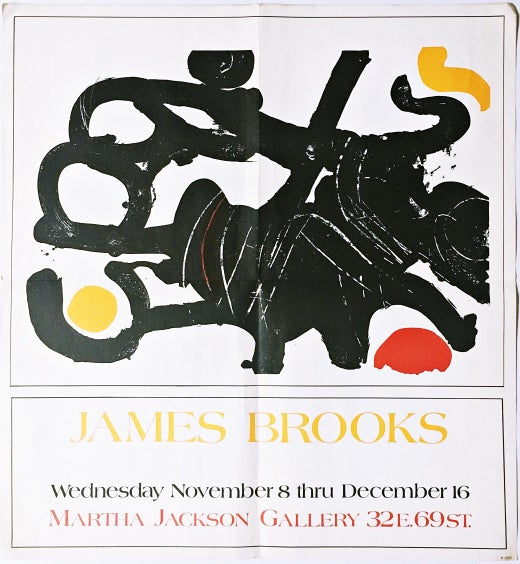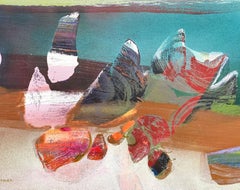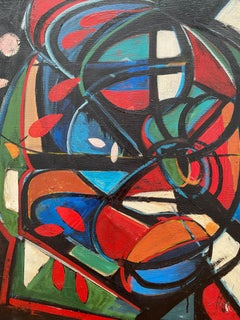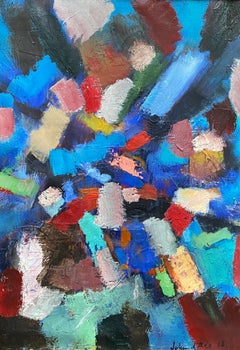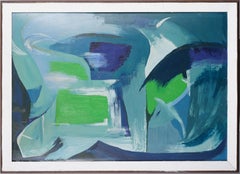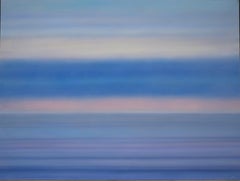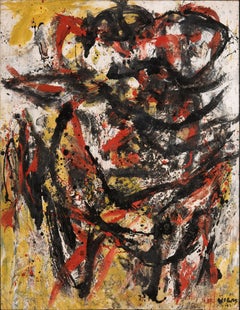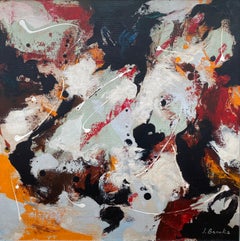
“Untitled Abstract”
View Similar Items
James Brooks“Untitled Abstract”Circa 1975
Circa 1975
About the Item
- Creator:James Brooks (1906-1992, American)
- Creation Year:Circa 1975
- Dimensions:Height: 24 in (60.96 cm)Width: 24 in (60.96 cm)Depth: 2 in (5.08 cm)
- Medium:
- Movement & Style:
- Period:
- Condition:Excellent; no issues.
- Gallery Location:Southampton, NY
- Reference Number:1stDibs: LU14112256982
James Brooks
A painter of both Social Realism and Abstract Expressionism and part of the New York School, James Brooks did many large-scale paintings that expressed a sense of cosmic space as though a high-powered telescope were penetrating space so deeply that one feels the color, the form and the surge of movement. He used much black, so that darkness seemed equal to the other colors of his canvases and conveyed a sense of void amongst floating and colliding bright colors.
In 1926, Brooks moved to New York City and worked as a commercial lettering artist, while taking night classes at the Art Students League from 1927 to 1930. From 1931 to 1934, he traveled and painted in the American West and Southwest, painting in a Social Realist style.
Between 1936 and 1942, he worked on murals for the WPA Federal Art Project including ones for Queensborough Public Library, Woodside Branch Library, and LaGuardia Airport. The LaGuardia mural called Flight, later destroyed, was especially impressive and huge — 12 feet by 235 feet. Brooks served in North Africa as an army artist during World War II, and the end of this service also marked the end of his painting in realistic styles.
In 1949, having observed Jackson Pollock's drip style, Brooks experimented with pouring pigment on the back of un-sized canvas, and became much lauded for his achieving of balance between spontaneity and control. In 1953, he abandoned that technique for much more densely packed, tightly controlled structure resembling Cubism. In the early 1960s, he added linear calligraphy to his painting.
From 1947 to 1975, Brooks taught at various colleges and universities including Pratt Institute, Columbia University, and Cooper Union in New York City, the Art Center in Miami, Yale University, and the University of Pennsylvania. In 1963, he was an artist-in-residence at the American Academy in Rome and in 1967 had a Guggenheim Fellowship.
Brooks died in East Hampton, New York, in 1992, having suffered from Alzheimer's disease beginning 1985.
Find original James Brooks paintings and other art on 1stDibs.
More From This Seller
View All1980s Abstract Expressionist Abstract Paintings
Canvas, Oil, Acrylic
1970s Abstract Expressionist Abstract Paintings
Acrylic, Oil, Canvas
1940s Abstract Expressionist Abstract Paintings
Canvas, Oil
1950s Abstract Expressionist Abstract Paintings
Canvas, Oil
1970s Abstract Expressionist Abstract Paintings
Canvas, Oil
1960s Abstract Expressionist Abstract Paintings
Canvas, Oil
You May Also Like
1960s Abstract Expressionist Abstract Paintings
Canvas, Oil
1950s Abstract Expressionist Abstract Paintings
Canvas, Oil
21st Century and Contemporary Abstract Expressionist Abstract Paintings
Canvas, Oil
1960s Abstract Expressionist Abstract Paintings
Canvas, Oil
1980s Abstract Expressionist Abstract Paintings
Canvas, Mixed Media, Oil
2010s Abstract Expressionist Abstract Paintings
Canvas, Oil
